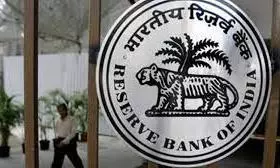Indian Economy & Financial System remains Resilient says RBI Gov

Mumbai: Even as the Indian economy and financial system remain robust and resilient, the central bank remains watchful of the emerging risks, including those from cyber hazards, climate change and global spillovers, the Reserve Bank of India (RBI) governor Shaktikanta Das said in his foreword in its 29th Financial Stability Report June 2024 edition, released on Thursday.
The RBI’s Financial Stability Report (FSR) is a bi-annual released in June and December.
Das said that the global economy is facing heightened risks from prolonged geopolitical tensions, elevated public debt, and the slow progress in the last mile of disinflation but despite these challenges, the global financial system has remained resilient, and financial conditions stable.
Gross non-performing assets (GNPA) ratio of scheduled commercial banks fell to a multi-year low of 2.8 per cent and the net non-performing assets (NNPA) ratio to 0.6 per cent at end-March 2024, the report states. Non-banking financial companies (NBFCs) also remain healthy, with CRAR at 26.6 per cent, GNPA ratio at 4.0 per cent and return on assets (RoA) at 3.3 per cent, respectively, at end-March 2024, it said.
Meanwhile, household debt levels needs to be closely monitored as financial liabilities have risen in the post-Covid period while the overall household savings have dipped from average levels seen in the decade before, the FSR said
Overall household savings have declined to 18.4 per cent of GDP in FY23, down from the average of 20 per cent of GDP seen between 2013-22. The share of net financial savings declined to 28.5 per cent in FY23 from an average of 39.8 per cent in 2013-22. Besides, net financial savings declined to 5.3 per cent of GDP in FY23, down from an average of 8 per cent in 2013-22.
“With overall household savings declining, coupled with an increasing trend in financial liabilities, household debt warrants close monitoring from a financial stability perspective,” the RBI said in its FSR.
India's overall debt stands at around 40.1 per cent of the GDP, low when compared to other emerging market economies. RBI noted that this is 'comparatively' high in relation to GDP per capita. The significant increase in financial stability among households following the pandemic is clearly reflected in the notable rise in retail loan growth. This growth encompasses both consumption-based loans and investment financing.
“Financial liabilities of households have risen in the post-pandemic period, as reflected in the surge in retail loan growth for financing both consumption and investment. Alongside, agricultural and business loans have also grown. Notably, more than two-thirds of borrowers are of prime and above credit quality."
The report said that households are now diversifying their savings and allocating their capital towards more non-bank and capital market instruments.

